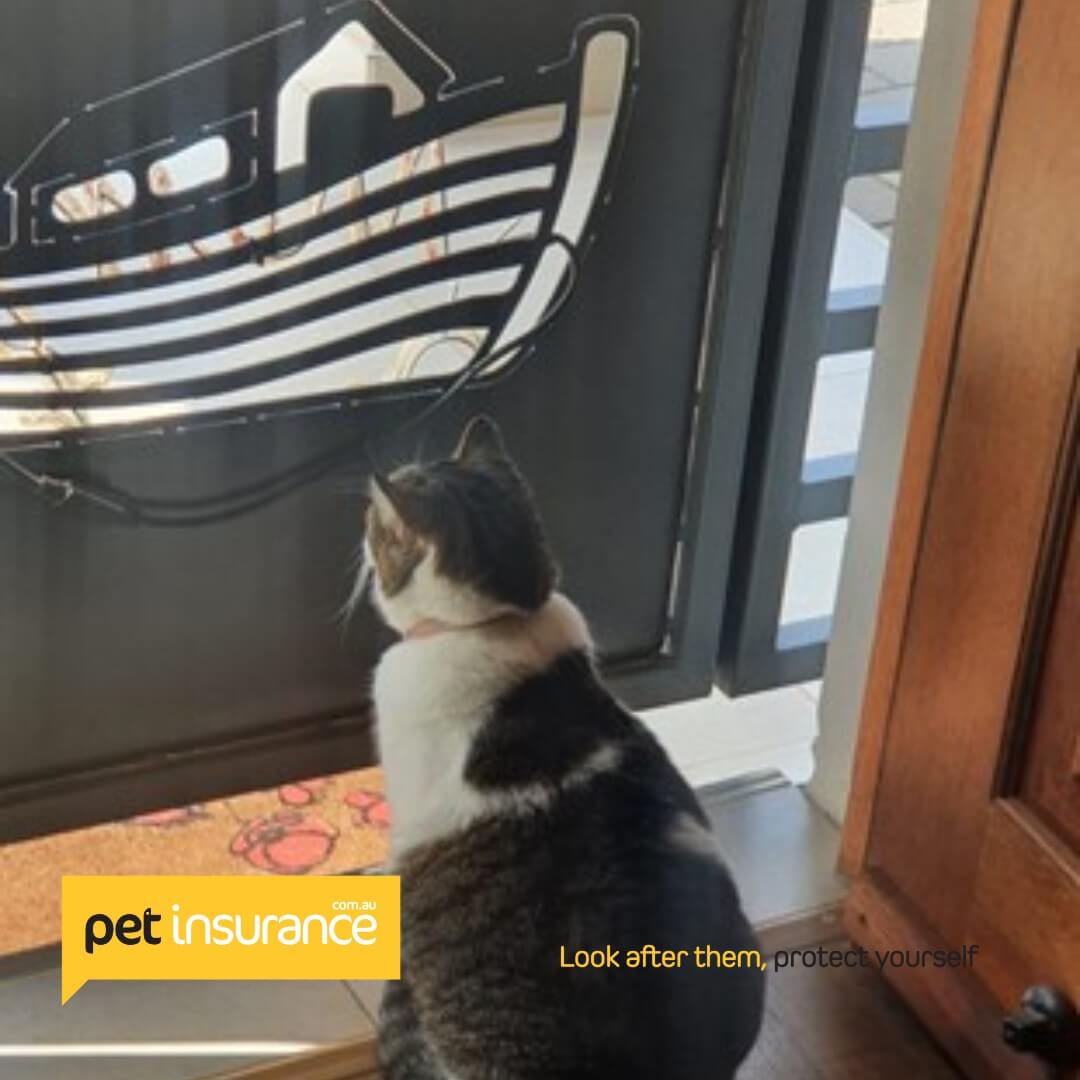Have you taken on your cat’s habits or they yours?

Meet Mienkie, Aka Mienkles as her family calls her.
The Botes family has had their furry feline friend for over 12 years, and she happily rules the house.
Rumour has it that it takes on average 66 days before a new behaviour (habit) becomes automatic. 12 years was more than enough time for Mienkles and her family to form some habits, some good and some, well, not that good, but who are we to judge!
Ronel, Mienkie’s Mum says that she finds it fascinating how Mienkie knows exactly when it is time for them to get up in the morning or go to bed in the evening. If they break their routine she is the first one to remind them of their schedule. She will walk up and down from the room where they are in to where she wants them to go, or where she knows they should be at that time.
Her Dad, Koos, says that one of the things that he giggles about often is the fact that after their morning routine Mienkie goes to sit at the front door like a watch dog. Not sure what she thinks she is protecting us from or what she would do if danger lurked but she seems happy so we leave her at that, and we definitely don’t want to mention that it is a dog’s job.
Another funny habit that she has is the fact that she likes claiming a room and a spot for a certain amount of time. Usually around a week at a time. She doesn’t have a favourite spot as the house belongs to her, says Ronel, but she picks out for instance a specific couch and will stick to that spot for a week before moving on to her next spot.
When it comes to feeding times, she leaves no stone unturned and will find you and tell you that it is time for her dins. I never have to worry about missing her dinner time, not that I ever will, but Mienkie makes such a fuss around that time that it is hard to miss. She has no scruples and even when we have guests she will come and call me in the middle of a conversation to come and feed her.
Mienkie loves a warm pair of feet to rest on. As soon as he settles himself in front of the TV she is on his feet and does not move…unless it’s time for dinner 😊.
While the above speaks around habits that are formed within a household that is build over many years through continues behaviour, cats in general have some strange habits.
Let’s have a look at some of them.
Chattering of teeth
- When it looks like your cat is having a fat chat with the bird outside, he probably isn’t. There are some theories around this. Some believe that it is historic behaviour where they are preparing their mouth muscles for killing their prey, others believe they do it out of frustration because they can’t get outside.
Kneading the dough
- We know kneading is a sign of comfort for a cat, but some take it all the way back to their kitten days. Some behaviourists say that the action of kneading is when a kitten was trying to get their mother’s milk. Instinctively they know that by putting pressure on their Mum’s mammary glands it will help with the milk flow.
Giving you the run around
- There could be a variety of reasons why cats bump objects off surfaces, one could simply be to keep you on your toes, but most believe that it simply goes back to their hunting days. They had to hunt for their food so knocking things over may be a manifestation of this instinct. Just like toddlers need to touch everything in sight to get familiar with different textures some believe that cats have the same tendency. They want to explore objects, their movement and sound to understand whether they are safe or not.
Twitching ears
- If a cat twitches their ears back and forth it means they might be annoyed. If, however their ears are slightly pointed up they might just be listening out for a sound or something might have alerted them.
Creative spaces
- Don’t stress if you see your cat squeezing themselves into a space half their size. This is what they like doing. They might look uncomfortable to you but historically cats wanted to get into tight spaces to feel safe while they keep a watchful eye out on the world.
Staring into space
- Ever wondered what your cat is staring at when they sit still and stare at a blank wall for hours. Don’t fear, you don’t need to put them in a loony bin, this is just because cats and dogs can capture subtle movements that we can’t see. They might be seeing light patterns or dust particles. … Remember that a cat doesn’t need to blink as often as humans do as historically it helped them keep an eye on their prey. Cats are also intelligent and understand non-verbal communication. If your cat sits and stares at you for a long time it could be that they are reading your eyes for cues on how you are feeling or trying to tell you how they are feeling.
Regardless of their habits and behaviours we can’t help but love our furry friends!
